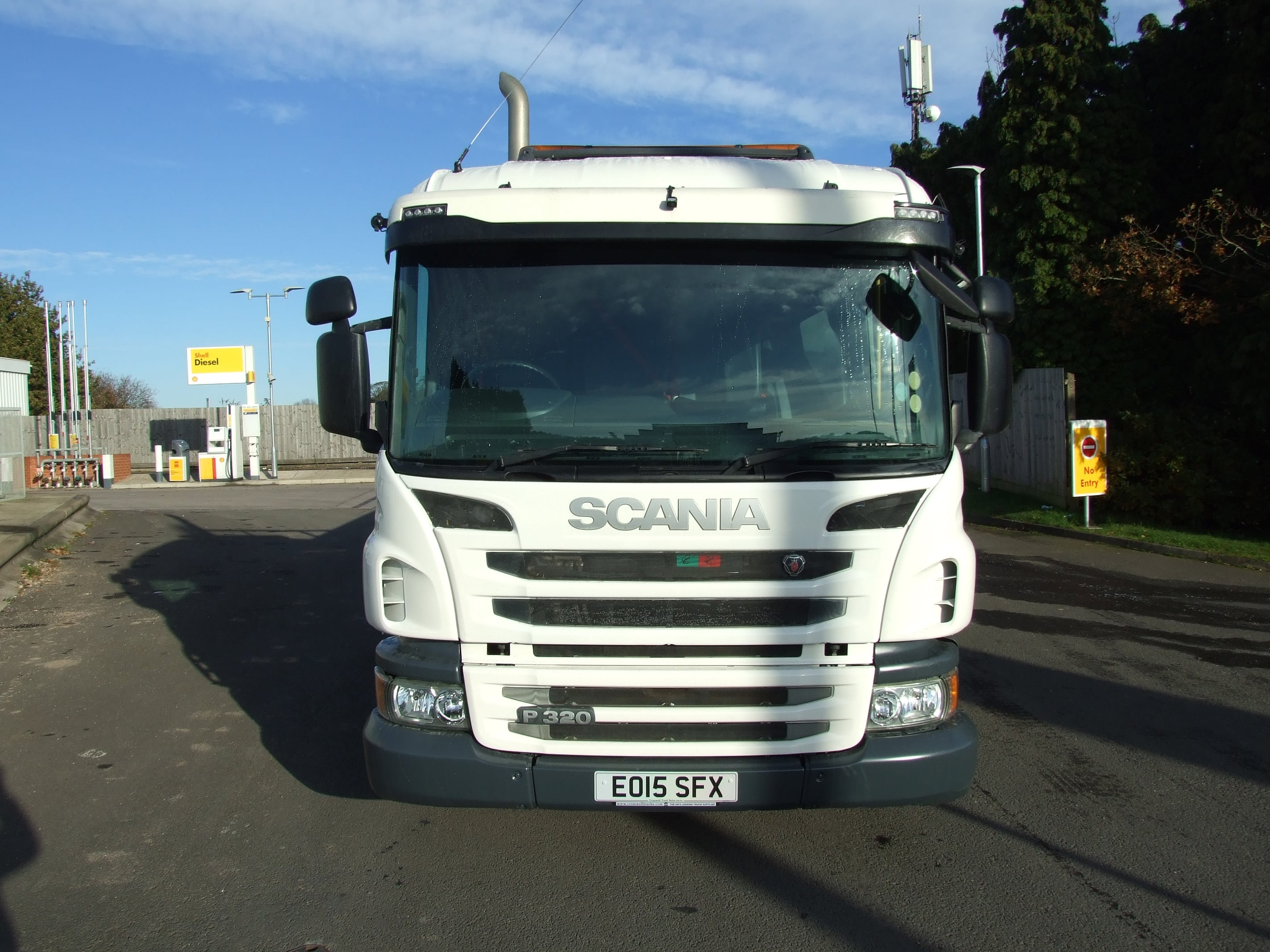European emission standards define the acceptable limits for exhaust emissions of new vehicles sold in the EU. The standards, the latest of which is Euro 6, remain unchanged since Brexit and Britain’s exit from the European Union.
Due to these standards, car, truck, and lorry manufacturers are obliged to ensure our vehicles have engines that meet the same environmental standards in order to shrink atmospheric pollutants. While the UK has adopted existing European policies, it is free to change its environmental regulations in the future.
Currently, all vehicles sold in the UK are tested before going on sale under the New European Driving Cycle (NEDC) procedure. This test measures emissions under controlled conditions and is witnessed by government agencies.
What Are The European Emission Standards?
Every four to five years, new Euro standards are released in an attempt to make vehicles more efficient and less polluting.
Below we show when each emission standard has been released so far, hence giving you a guide to what emissions standard each type of vehicle will be, depending on when it was manufactured (as a guide only).
- Euro 1 Standard – introduced on 31st December 1992
- Euro 2 Standard – introduced on 1st January 1997
- Euro 3 Standard – introduced on 1st January 2001
- Euro 4 Standard – introduced on 1st January 2006
- Euro 5 Standard – introduced on 1st January 2011
- Euro 6 Standard – introduced on 1st September 2015
Why Do We Have Them?
Faced with the increasing concerns around global warming and pollution, the European Union is striving for a cleaner, more controlled emissions from our vehicles. Starting back in 1993 with Euro 1, European authorities decided to map out a plan to make the trucks and lorries on our roads as clean and efficient as they can be in an attempt to eliminate pollutants such as Carbon Monoxide (CO), NOx (Nitrogen Oxide), Hydrocarbons (HC), and Particulate Matter (PM).
In 2017, the Society of Motor Manufacturers and Traders (SMMT) identified the gains resulting from the implementation of the Euro emissions standards. Since 2013, Carbon Monoxide emissions from diesel vehicles have dropped by 82 percent. Particulate Matter from diesel trucks has been cut by 96 percent since 1993, and Hydrocarbons and Nitrogen Oxide have fallen by 84% since 2001.
What Do The Euro Emission Standards Mean?
Euro 1 (EC93)
The European emissions standards come into force and require car, van, and truck manufacturers to include a catalytic converter on all new vehicles. Euro 1 also ushered in the switch to unleaded petrol. The emissions that were tested included Particulate Matter, Nitrogen Oxide, and Hydrocarbons.
The Euro 1 standard for diesel vehicles limits emissions to:
- CO – 2.72g/km
- PM – 0.97g/km
- HC+NOx – 0.97g/km
Euro 2 (EC96)
Different limits were introduced for petrol and diesel vehicles with the Euro 2 standard. The limits for unburned Nitrogen Oxide and Hydrocarbons, and Carbon Monoxide were lowered.
The Euro 2 standard for diesel vehicles limits emissions to:
- CO- 1g/km
- PM – 0.08g/km
- HC+NOx – 0.7g/km
Euro 3 (EC2000)
Hydrocarbons and Nitrogen Oxide limits were split for diesel vehicles, and during testing, trucks and lorries were no longer allowed to warm up before the test.
The Euro 3 standard for diesel vehicles limits emissions to:
- NOx – 0.5g/km
- CO – 0.66g/km
- PM – 0.05g/km
- HC+NOx – 0.56g/km
Euro 4 (EC2005)
The Euro 4 standard focused on cleaning up emissions and, in particular, reducing NOx and Particulate Matter.
The Euro 4 standard for diesel vehicles limits emissions to:
- NOx – 0.25g/km
- CO – 0.5g/km
- PM – 0.025g/km
- HC+NOx – 0.3g/km
Euro 5
Diesel Particulate Filters (DPF) were introduced as part of the Euro 5 emissions standard. The particulate filters capture 99% of particulate Matter and help trucks and lorries meet the lower total emissions. Engines that meet the standard now emit the equivalent of one grain of sand per kilometre.
The Euro 5 standard for diesel vehicles limits emissions to:
- NOx – 0.18g/km
- CO – 0.5g/km
- PM – 0.005g/km
- HC+NOx – 0.23g/km
- PN [#/km] – 6.0×10 ^11/km
Euro 6
Euro 6 is the current standard for new registrations, and for diesel trucks, the permitted emissions of NOx were reduced from 180mg/km to 80mg/km. The move was made after studies linked NOx to respiratory problems. To produce compliant Euro 6 trucks, some manufacturers added Selective Catalytic Reduction (SCR) technology to their vehicles.
SCR technology works by injecting a liquid-reduction chemical through the catalyst and into the truck’s exhaust. The agent’s reaction converts NOx into harmless nitrogen and water as it leaves the exhaust pipe.
An alternative approach used by lorry manufacturers is to use Exhaust Gas Recirculation (EGR) technology. The vehicle’s ECU controls the EGR process, which mixes intake air with the exhaust gas to lower its burning temperature.
The Euro 6 standard for diesel vehicles limits emissions to:
- NOx – 0.08g/km
- CO – 0.5g/km
- PM – 0.005g/km
- HC+NOx – 0.17g/km
- PN [#/km] – 6.0×10 ^11/km
Euro 6D, Euro 6D-Temp, And Real Driving Emissions
In 2017, the European Union introduced the Real Driving Emissions (RDE) test. The goal of the RDE test was to more accurately reflect emissions on the open road, limiting the differences from tests conducted in a laboratory setting. The new test parameters were a result of the 2015 dieselgate scandal, which showed that vehicle manufacturers were cheating to meet the Euro emissions standards.
During the period of 1st September 2017 to 1st September 2019, vehicles are permitted to be up to 2.1 times the Euro 6 laboratory limits for NOx emissions. These vehicles are classed as Euro 6D-Temp.
From January 2020 for new type approvals and January 2021 for new registrations, vehicles are permitted to be up to 1 times the Euro 6 laboratory limits for NOx emissions (with an error margin of 0.5). These vehicles are classed as Euro 6D.
Diesel MOT Tests
Since May of 2018, any truck, lorry, or van fitted with a Diesel Particulate Filter (Euro 5 and Euro 6 diesel trucks) that produces visible smoke of any colour receives an automatic fail. Furthermore, evidence of tampering with the DPF results in a fail.
The Benefits Of Being Euro 6 Compliant
Converting your fleet to Euro 6 trucks is a superb investment and offers several benefits:
- Pay less tax – Vehicle Excise Duty (VED) is less with low pollution and high fuel efficiency, directly affecting how much you will pay.
- Clean Air Zones – A daily charge is levied against vehicles entering Clean Air Xones (Low Emission Zones (LEZ) and Ultra Low Emission Zones (ULEZ)) that do not meet the set standards. Furthermore, European countries have introduced their own Clean Air Zones. If your business conducts haulage into or out of Europe, similar charges will apply for trucks and vehicles that do not meet the Euro 6 standard.
- Greater fuel efficiency – Euro 6 trucks use less fuel so that you will reduce your monthly operating costs.
- More powerful trucks – Euro 6 trucks are more powerful than their Euro 5 counterparts, which will help you boost your efficiency.
The Vehicle Affected By Low Emission Zones
In 2018, the UK government announced its Road to Zero strategy to help the country move towards zero-emission road transport. This means a high daily charge applicable for vehicles entering Low Emission Zones that don’t meet the set standards. As a result, the strategy will encourage businesses and vehicle owners to buy Euro 6 trucks.
The government initially stated that it would ban the sale of petrol and diesel vehicles by 2040, with a complete ban by 2050. Since this was first announced, the deadline was brought forward to 2030.
You can find out if your truck, van, or lorry meets emissions and safety standards required to drive in London or if you must pay a daily charge. The Low Emission Zone Checker also checks for the Congestion Charge, Ultra Low Emission Zone (ULEZ), Direct Vision Standard (DVS), and HGV Safety Permit.
The daily Ultra Low Emission Zone charge for vehicles up to 3.5 tonnes is £12.50, and £100 for vehicles over 3.5 tonnes.
You can use the Clean Air Zone Checker to check if you need to pay to enter the Clean Air Zones in Bath, Portsmouth, and Birmingham. To use the online service, you will need a CSV format spreadsheet that includes all the number plates (registration numbers) of your truck fleet. In addition, you will need an email address, your company name, and a debit or credit card.
The daily Birmingham Clean Air Zone charge is £8 for LGVs and £50 for HGVs and covers the area within the A4540 Middleway.
The Bristol Clean Air Zone daily charge is £9 for LGVs and £100 for HGVs. The Portsmouth Clean Air Zone charge for non-compliant vehicles is £10 per day for LGVs. However, it is £50 per day for HGVs.














